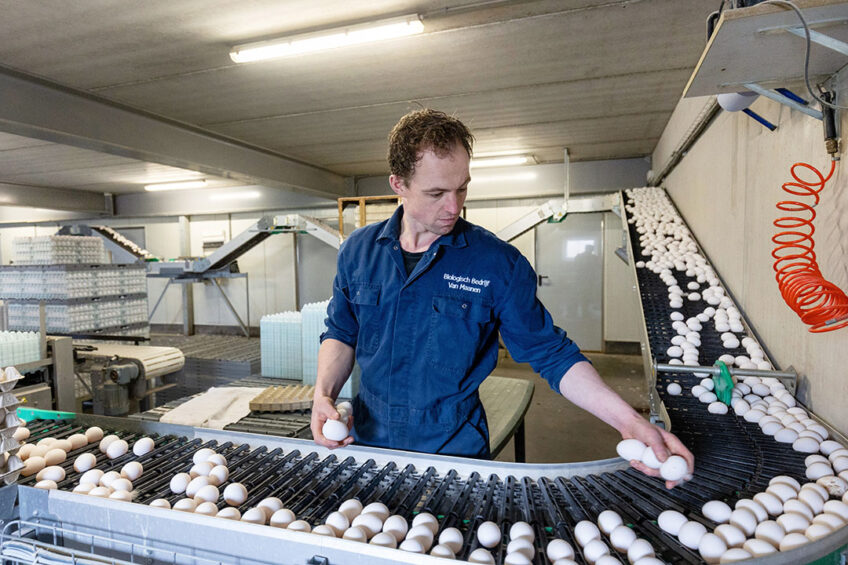6 factors driving global egg price volatility

High and volatile global egg prices are linked to 6 disruptive supply and demand factors, according to a new report from Rabobank. While the factors differ by region, in most markets now facing peak prices, a combination of them is at play, argues Rabobank’s senior analyst animal protein, Nan-Dirk Mulder.
Egg prices have become increasingly volatile and reached record highs in markets across the globe this year. This is greatly impacting consumers and players in the egg supply chain – from breeders and producers, to customers in retail, foodservice and food processing.
Rabobank believes it will require a rethink of industry value chains, from producers to customers, and how governments interact with the value chain. While consumers face high prices and availability issues, suppliers struggle with disease, cost inflation, new regulations, government intervention and changing consumer demand. This has resulted in supply chain disruptions with considerable price volatility, high price peaks and, in some cases, empty supermarket shelves.
 High feed costs
High feed costs
Feed costs are directly linked to global grain and oilseed prices and represent 60-70% of a layer farmer’s costs. Any change, upward price movements and, particularly, any uncertainty about feed costs, significantly impact egg prices.
From mid-2020 to mid-2022, feed prices nearly doubled in many markets and producers struggled to pass on those higher costs to consumers. The Ukraine war unleashed major concerns about both energy prices and global ingredients, and many producers acted conservatively regarding feed prices and placements of new hens. Smaller and backyard flock owners, especially in emerging markets, sharply reduced production or exited the industry due to lack of capital.
 Avian influenza outbreaks
Avian influenza outbreaks
Ongoing avian influenza pressures over the past 2 years and the fact the virus is a now a year-round phenomenon, have caused downturns in production. In the United States, more than 40 million layers were depopulated during 2022 and early 2023. While case numbers have been lower in the first half of this year, the industry is still repopulating.
Both the laying hen flock, which has fallen by 6%, and egg production are still below 2021 levels. This led to a 9% decline in eggs in the US in March 2023. There are similar developments in Europe with a likely fall of 5% in the laying hen population since 2021, with a slightly higher figure in the UK.
Avian influenza has also had a substantial impact in other regions, with Japan culling 17 million birds or 9% of its flocks and South Africa culling nearly 3 million layers thus reducing the laying hen flock by 10%.
 Covid-19 repercussions
Covid-19 repercussions
Most countries have now lifted Covid-19 restrictions and demand has returned, particularly for the restaurant and out-of-home sectors. But the supply recovery, especially in breeding, has been relatively slow due to the long production/reproduction cycle. It can take more than a year to rebalance supply with rising demand, due to the industry’s long production cycle.
Some markets still face a tight supply of grandparent stock. Mulder says the situation has been worsened by restrictions set by some governments on breeding stock imports due to avian influenza in Europe and North America where some of the biggest GPS exporters are located.
 Egg demand strengthening as consumers trade down
Egg demand strengthening as consumers trade down
With the fall in global GDP growth slowing from 6.1% in 2021 to 3.4% in 2022 and likely to be just 2.8% in 2023, there is growing pressure on consumer spending, especially in Europe, Africa and the Americas.
Eggs are usually one of the lowest-cost animal protein sources and therefore, a major staple food in many markets, especially in emerging markets. Consumers are trading down from expensive animal proteins, such as beef, to poultry and eggs, and from expensive concepts, like organic and free-range, to cheaper concepts. This has led to a strengthening global demand for eggs.
 Uncertain sales contracts
Uncertain sales contracts
Producers have been exposed to major challenges on the supply side, with high and volatile input cost increases following 2 years of low margins that were caused by challenging market conditions due to Covid-19. They have been looking for more certainty in their sales contracts, considering the insecurities they face in their operations, markets and the significant working capital required by current inflated costs.
In many markets, customers in the retail, foodservice and food processing sectors have been reluctant to take long-term positions, as they also face changing market conditions and expect strong price competition in retail and foodservice channels. The lack of value chain commitment to egg producers, together with the industry’s long production cycle, higher risks and high working capital, means producers in many markets have become cautious with their placements which has resulted in tight supply situations.
 Regulations and government intervention
Regulations and government intervention
New regulations are affecting the egg sector, especially around the introduction of male chick culling at the hatchery level in Germany in 2022. The main alternatives for producers are to use gender identification technology, grow the males for meat or import hens from abroad. These local supply options have increased costs compared to other countries in Europe that have yet to introduce similar requirements. As a result, Germany’s laying hen flock has dropped sharply, perhaps by as much as 20% since the second half of 2022.
Other restrictions on cage-based production and restrictions on nitrogen emissions in the Netherlands will also affect supply. New Zealand’s ban on cage-based production has already led to a 10-15% shortage of laying hens needed to meet demand.












